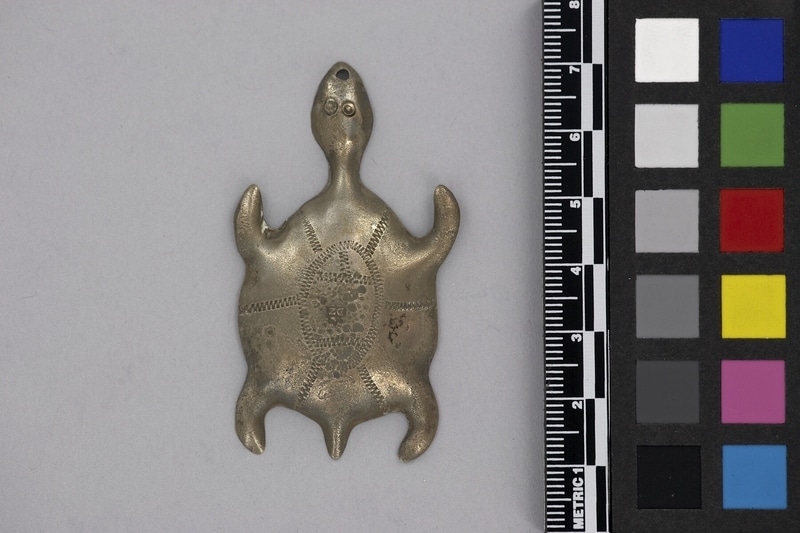Turtle Pendant Item Number: 1590/54 from the MOA: University of British Columbia

Description
Hollow, thin, silver turtle with hole in head; engraved eyes; zigzag line outlines carapace; six zigzag lines radiate to outer edge. Maker's mark at centre, partly indecipherable.
History Of Use
Initially, the main sources of silver were British, French, and Spanish coins. Most ornaments were produced by silversmiths of European origin in North America and Europe. By the mid-18th century silver objects were produced in New England, Quebec and Montreal. Silver ornaments continue to be produced by native silversmiths in Canada and the USA. Animal imagery is a significant part of woodland first nations tradition, but no documented instance has been found of the use of animal effigies in trade. The place of effigies in woodlands culture is not known.
Cultural Context
personal ornamentation
Specific Techniques
Roulette engraving produces a uniform zigzag, an identifying feature of this technique, and is created by using a revolving disk with sharp teeth.
Iconographic Meaning
The Iroquois legend of the turtle explains that the Earth was formed from a lump of mud on the turtle's back. See Frederickson, page 59.
Item History
- Made by David Zachary (Maker) in Canada ? or USA ? between 1760 and 1821
- Owned by Kathleen E. Reif before September 9, 1993
- Received from Kathleen E. Reif (Donor) on September 9, 1993
What
Who
- Culture
- Eastern Woodlands
- Creator
- David Zachary (Maker)
- Previous Owner
- Kathleen E. Reif
- Received from
- Kathleen E. Reif (Donor)
Where
- Holding Institution
- MOA: University of British Columbia
- Made in
- Canada ? or USA ?
When
- Creation Date
- between 1760 and 1821
- Ownership Date
- before September 9, 1993
- Acquisition Date
- on September 9, 1993
Other
- Item Classes
- metalwork
- Condition
- good
- Current Location
- Case 45
- Accession Number
- 1590/0054